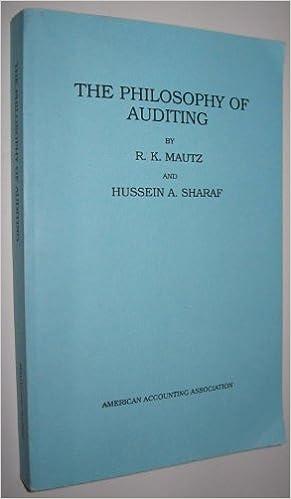Question
Problem 5-14B Comparing an ABC system with a traditional costing system Since its inception, Batum Laboratory has produced a single product, Product S109. With the
Problem 5-14B Comparing an ABC system with a traditional costing system
Since its inception, Batum Laboratory has produced a single product, Product S109. With the advent of automation, the company added the technological capability to begin producing a second product, Product N227. Because of the success of Product N227, manufacturing has been shifting toward its production. Sales of Product N227 are now 50 percent of the total annual sales of 20,000 units, and the company is optimistic about the new products future sales growth. One reason the company is excited about the sales potential of its new product is that the new products gross profit margin is higher than that of Product S109. Management is thrilled with the new products initial success but concerned about the companys declining profits since the products introduction. Suspecting a problem with the companys costing system, management hires you to investigate.In reviewing the companys records, product specifications, and manufacturing processes, you discover the following information:
The company is in an extremely competitive industry in which markups are low and accurate estimates of cost are critical to success.
Product N227 has complex parts that require more labor, machine time, setups, and inspections than Product S109.
Budgeted costs for direct materials and labor follow:
| Direct Cost per Unit | Product S109 | Product N227 |
| Direct materials | $25 | $35 |
| Direct labor | $10/hour 2 hours production time | $10/hour 2.8 hours production time |
|
|
|
|
The company presently allocates overhead costs to its products based on direct labor hours. After carefully studying the companys overhead, you identify four different categories of overhead costs. Using your knowledge of this company and similar companies in the same industry, you estimate the total costs for each of these categories and identify the most appropriate cost driver for measuring each products overhead consumption. Detailed information for each cost category follows:
| Category | Estimated Cost | Cost Driver | Use of Cost Driver |
| Unit level | $ 540,000 | Number of machine hours | S109: 20,000 hours; N227: 60,000 hours |
| Batch level | 228,000 | Number of machine setups | S109: 1,500; N227: 3,500 |
| Product level | 180,000 | Number of inspections | S109: 200; N227: 600 |
| Facility level | 60,000 | Equal percentage for products | S109: 50%; N227: 50% |
| Total | $1,008,000 |
Required
Determine the predetermined overhead rate the company is using.
Compute the amount of overhead the company assigns to each product using this rate.
Determine the cost per unit and total cost of each product when overhead is assigned based on direct labor hours.
To remain competitive, the company prices its products at only 20 percent above cost. Compute the price for each product with this markup.
Compute the overhead rate for each category of activity.
Determine the amount of overhead cost, both in total and per unit, that would be assigned to each product if the company switched to activity-based costing.
Assuming that prices are adjusted to reflect activity-based costs, determine the revised price for each product.
Based on your results for Requirements f and g, explain why Product N227 costs more to make than previously apparent and why sales prices therefore need to be adjusted.
Step by Step Solution
There are 3 Steps involved in it
Step: 1

Get Instant Access to Expert-Tailored Solutions
See step-by-step solutions with expert insights and AI powered tools for academic success
Step: 2

Step: 3

Ace Your Homework with AI
Get the answers you need in no time with our AI-driven, step-by-step assistance
Get Started


